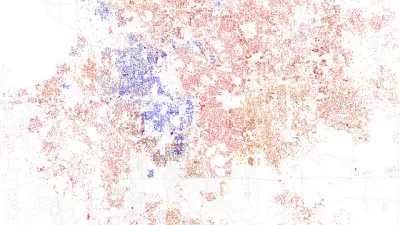A report from the U.S. Environmental Protection Agency's Office of Inspector General calls out state environmental agencies for a lack of civil rights enforecement and makes recommendations for resolving shortcomings.

A new report from the Environmental Protection Agency's (EPA) Office of Inspector General scrutinized the agency's enforcement of Title VI of the 1964 Civil Rights Act and found that the majority of state environmental agencies fail to prevent discrimination, and "the EPA is not fulfilling its obligation to get them in line," reports Naveena Sadasivam.
According to the inspector general's report, 43 state agencies failed to meet at least one of the criteria set forth by the EPA to avert discrimination. "The checklist requires, in part, that funding recipients post nondiscrimination notices in prominent locations in the office, that they provide language assistance services for those with limited proficiency in English, and that they hire a nondiscrimination coordinator," Sadasivam says.
The EPA investigated complaints to be filed as a catalyst to investigate compliance with the nondiscrimination rules rather than proactively confirming that states were adhering to the nondiscrimination criteria checklist.
Last week’s report is hardly the first time that the EPA has come under fire for accepting few civil rights complaints for investigation, spending years — and sometimes decades — resolving them, and almost never making findings of discrimination," writes Sadasivam, noting a 2015 investigation by Center for Public Integrity finding that the EPA dismissed 95% of submitted complaints.
The inspector general's report makes six recommendations to remedy these instances of neglect.
FULL STORY: Report: Environmental agencies are violating civil rights laws — and the EPA is letting them

Alabama: Trump Terminates Settlements for Black Communities Harmed By Raw Sewage
Trump deemed the landmark civil rights agreement “illegal DEI and environmental justice policy.”

Planetizen Federal Action Tracker
A weekly monitor of how Trump’s orders and actions are impacting planners and planning in America.

The 120 Year Old Tiny Home Villages That Sheltered San Francisco’s Earthquake Refugees
More than a century ago, San Francisco mobilized to house thousands of residents displaced by the 1906 earthquake. Could their strategy offer a model for the present?

In Both Crashes and Crime, Public Transportation is Far Safer than Driving
Contrary to popular assumptions, public transportation has far lower crash and crime rates than automobile travel. For safer communities, improve and encourage transit travel.

Report: Zoning Reforms Should Complement Nashville’s Ambitious Transit Plan
Without reform, restrictive zoning codes will limit the impact of the city’s planned transit expansion and could exclude some of the residents who depend on transit the most.

Judge Orders Release of Frozen IRA, IIJA Funding
The decision is a victory for environmental groups who charged that freezing funds for critical infrastructure and disaster response programs caused “real and irreparable harm” to communities.
Urban Design for Planners 1: Software Tools
This six-course series explores essential urban design concepts using open source software and equips planners with the tools they need to participate fully in the urban design process.
Planning for Universal Design
Learn the tools for implementing Universal Design in planning regulations.
Clanton & Associates, Inc.
Jessamine County Fiscal Court
Institute for Housing and Urban Development Studies (IHS)
City of Grandview
Harvard GSD Executive Education
Toledo-Lucas County Plan Commissions
Salt Lake City
NYU Wagner Graduate School of Public Service





























